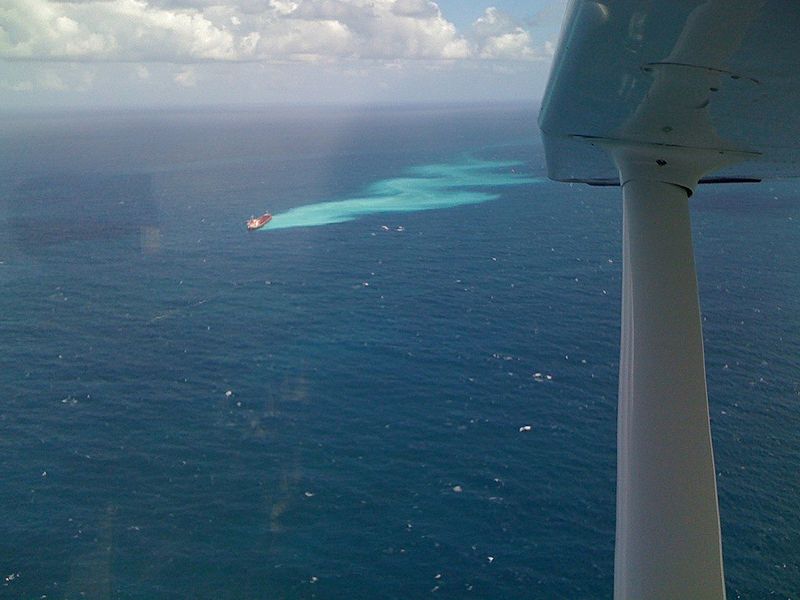
A couple of weeks ago, a Chinese cargo ship carrying coal from Australia to China, became stranded on the Great Barrier Reef. Shortly afterward, the ship began leaking oil. Luckily the ship was not an oil tanker, or the situation might have been far more disastrous. The oil leak was quickly stopped, and the cleanup began.
The damage caused by the ship pulverizing a swath of the reef is much more concerning. The ship caused a 2 mile long area of destruction. Everything in its path was crushed. The paint that was scraped off of the ship’s hull is an anti-fouling paint that contains algicides, pesticides, and other chemicals used to prevent algae and other aquatic organisms from attaching to the bottom of the boat. Corals, shrimp, and other organisms that come in contact with the paint will almost certainly perish. A massive cleanup has begun to remove the paint from the reef in hopes of preventing further mortality in that area.

One may think that damage to a relatively small, 2 mile stretch of the Great Barrier Reef would not have a massive impact. The problem is that this is just another stress factor faced by reef organisms around the world. How much stress can these delicate ecosystems take before the effects become irreversible? There are already signs of massive bleaching from water temperature increases from the recent El Nino. Pressure on these areas caused by careless human errors are the last thing they need to contend with.
Oil spill on the Barrier Reef image referenced from wikipedia and originally posted by Whitealley
Blue Starfish (Linckia laevigata) resting on hard Acropora coral. Lighthouse, Ribbon Reefs, Great Barrier Reef image referenced from wikipedia and originally posted by Richard Ling
 That Fish Blog – Aquarium Advice and Information
That Fish Blog – Aquarium Advice and Information


